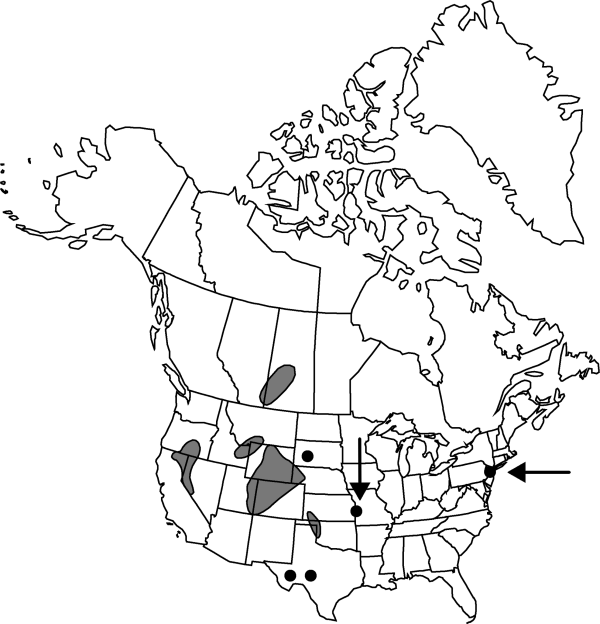Chenopodium desiccatum
Bot. Gaz. 34: 362. 1902.
Stems erect to more often spreading, usually branched from base, 1–1.4 (–6) dm, densely farinose. Leaves nonaromatic; petiole 0.3–0.4 cm; blade linear, narrowly lanceolate, oblong-elliptic, or ovatelanceolate, 3- (occasionally 1-) veined, 1.5–2.5 × 0.4–0.6 cm, 3–many times as long as wide, thick and somewhat fleshy, base cuneate, margins entire, unlobed, apex acuminate, densely white-farinose abaxially, more sparsely farinose adaxially. Inflorescences glomerules in terminal and axillary panicles; glomerules ± densely packed, flowers maturing irregularly; bracts leaflike or absent. Flowers: perianth segments 5, distinct nearly to base; lobes obovate, 0.8–1 mm, apex obtuse, carinate, densely farinose, enclosing fruit at maturity; stamens 5; stigmas 2, 0.1 mm. Utricles ovoid; pericarp nonadherent, smooth. Seeds ovoid, 8–1.1 mm diam., margins rounded; seed-coat black, warty. 2n = 18.
Phenology: Fruiting mid summer–fall.
Habitat: Originally found in open undisturbed soils, prairies, and sandy stabilized dunes, but it has spread to disturbed open areas within its native range and beyond
Elevation: 500-2000 m
Distribution

Alta., Sask., Calif., Colo., Idaho, Kans., Mo., Nebr., Nev., Okla., S.Dak., Tex., Utah, Wyo.
Discussion
Selected References
None.
Lower Taxa
"narrower" is not a number."dm" is not declared as a valid unit of measurement for this property."dm" is not declared as a valid unit of measurement for this property.